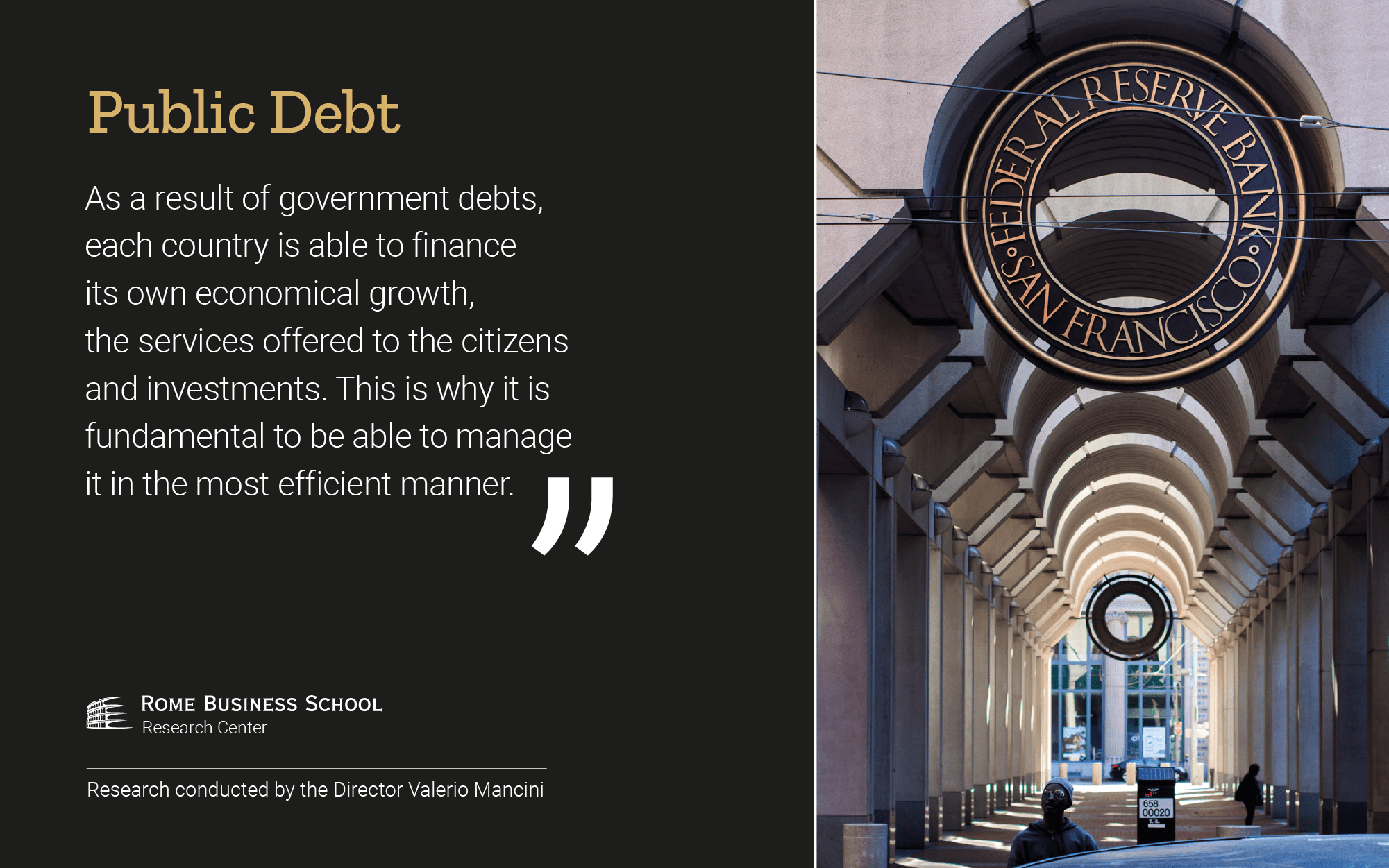What do we mean for "Public Debt"?

An extract from the Rome Business School Research Center Research Report
Public debt is the debt contracted by the state to meet its own needs. In other words, it represents the necessary resources to ensure that the state machine, made up of services and investments, works. The difference between a state’s income and expenditure is called the primary balance. In the calculation operation, the interest on the previous debt that a state pays to its creditors must be added. A deficit occurs when income is less than the sum of expenses and interest expenses. Public debt can also be defined as the stratification, year after year, of deficits.
Therefore, it is the debt contracted by a state to meet its own needs. The holders of the public debt, ie the creditors of the State in question, are all those subjects who have financed the State in some way. Thanks to public debt, each state finances its own economic growth, the services it offers to citizens, investments: for this reason, proper management of public debt is one of the most important tasks of any government. The instruments through which a state finances its public debt is different. By far the most widely used instrument is undoubtedly that of issuing medium / long-term or short-term bonds.
However, is also important to understand which are the government bonds in public debt. For example, in the case of the Italian State, medium-long term instruments are mainly BTPs (multi-year treasury bills with a variable maturity from 3 to 50 years), CCT (Treasury credit certificates) or CCTEUs. For shorter maturities, the Ministry of the Treasury uses the Bots (ordinary treasury bills with a maturity of 3 to 12 months) and Ctz (zero coupon treasury certificates with a maturity of 24 months). Similar instruments can be found in all other nations of the world (famous for example the US Treasuries and the German Bund). In recent years, Btpi € (multi-year Treasury bills indexed to European inflation and Italian BTPs (multi-year Treasury bills indexed to Italian inflation) have also spread in Italy, which take into account the evolution of inflation.
Differences between Deficit, Public Spending and Interest on Debt
As we have seen, through its debt each state finances its deficit, ie the difference between its income and its expenditure. If the annual budget of a State is in deficit, ie the annual expenses are higher than the incoming ones, then it is necessary to resort to the debt which therefore increases to compensate for the deficit.
Both public spending and interest on debt (i.e. on various bonds such as Bots or BTPs) make up the expenditure of a state: for this reason, an uncontrolled debt can become a great risk for a public budget as it can lead to an increase in deficit due to rising interest and therefore a negative circuit that can also lead to the default of a state (when it becomes insolvent and refuses to pay its creditors). In several cases, some countries of the world have been obliged, to avoid being cut off from international investments, to make huge cuts in their spending and their welfare state (for example by closing schools, hospitals and other activities related to the national public service) .
To avoid such a scenario, governments typically try to keep their debt levels under control through various tools, such as major financial austerity maneuvers. Public debt management is also heavily influenced by monetary policy decisions. In fact, a cut in the cost of money, ie interest rates, albeit aimed at stabilizing prices, involves a lower cost of the public debt as the interest paid on it decreases. When a central bank – for example that of the United States – reduces the cost of money, it indirectly decreases the weight of the public debt incurred in its own currency. In the case of the European Union, it is the European Central Bank – ECB that regulates the cost of money and therefore uses monetary leverage at the continental level (simultaneously against all countries that use the euro as their currency, the Eurozone) .




